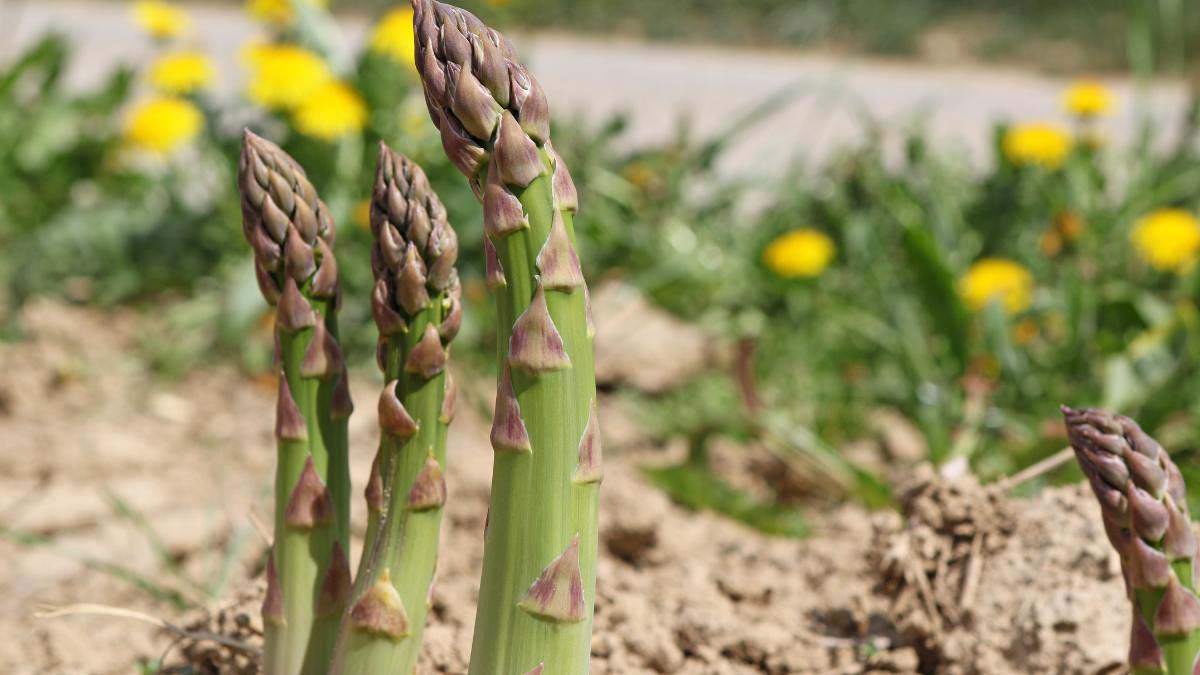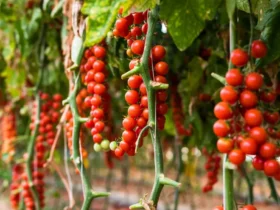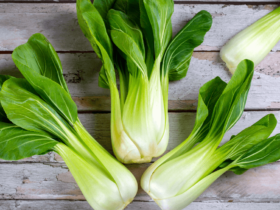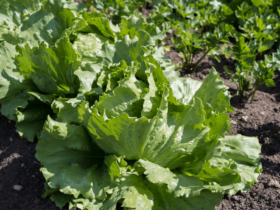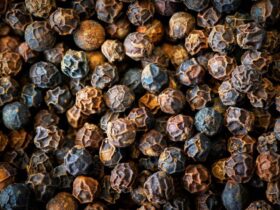Stages of Growing Asparagus goes through four stages: planting, establishing, producing, and harvesting. These stages include activities such as preparing the soil, planting asparagus crowns, maintaining weed control, providing proper irrigation, and finally, harvesting the spears once they have reached maturity.
Asparagus is a perennial crop, so proper care and management are essential for the plant’s long-term success and productivity. We will explore the different stages of growing asparagus in detail, providing valuable insights and tips to help you achieve a bountiful harvest.
So, let’s dive in and learn about the journey of growing this delicious and nutritious vegetable.
Choosing The Right Varieties
When it comes to cultivating asparagus, selecting the right varieties is crucial. Whether you are a seasoned gardener or a beginner, choosing the right varieties for your climate and ensuring disease resistance can significantly impact the success of your asparagus patch. In this article, we will discuss two essential factors to consider when choosing asparagus varieties: climate-appropriate varieties and disease resistance.
Selecting Climate-appropriate Varieties
Growing asparagus begins with selecting varieties that are suitable for your local climate. Asparagus is a hardy perennial vegetable that thrives in various climates, but different varieties have specific temperature and weather preferences.
If you live in a region with warmer temperatures, opt for heat-tolerant varieties such as ‘Jersey Giant’ or ‘Mary Washington,’ which perform well in hot summers. These varieties are known for their ability to withstand scorching temperatures without compromising yield or quality.
On the other hand, for those in colder climates, choosing cold-hardy asparagus varieties is essential. Varieties like ‘Viking KB3’ and ‘Purple Passion’ are excellent options for areas with frosty winters. These varieties can tolerate lower temperatures and still produce delicious spears in spring.
Before making a purchase, research the climate requirements of different asparagus varieties and choose the ones that align with your local weather patterns.
Considering Disease Resistance
While asparagus can be a hearty plant, it is not immune to diseases. To ensure a healthy and productive asparagus patch, it’s essential to select varieties that exhibit good disease resistance.
Asparagus Rust: Rust is a common fungal disease that affects asparagus plants. Look for varieties labeled as resistant to rust, such as ‘Millennium’ or ‘Jersey Supreme.’ These cultivars have shown increased resistance to rust and are less likely to succumb to the disease.
Crown Rot: Crown rot is another prevalent asparagus disease caused by soilborne pathogens. To minimize the risk, select varieties with resistance to crown rot, like ‘UC 157 F1’ or ‘Gijnlim.’ These varieties have demonstrated strong resistance and can help prevent crown rot from jeopardizing your asparagus crop.
Furthermore, when planting asparagus, it is crucial to start with healthy crowns or seedlings from reputable sources. By choosing disease-resistant varieties and starting with robust plants, you can set the foundation for a thriving asparagus bed.

Preparing The Soil
Properly preparing the soil is crucial for successfully growing asparagus. By taking the time to test and adjust the soil pH, as well as amending it with organic matter, you can provide the ideal environment for your asparagus plants to thrive. In this article, we will explore the stages of growing asparagus, focusing specifically on the first step—preparing the soil.
Testing And Adjusting Soil Ph
Before planting asparagus, it is essential to test the soil pH to ensure it falls within the optimal range for growing these delicious spears. The ideal pH range is between 6.0 and 7.0, which is slightly acidic to neutral.
To determine the pH level of your soil, you can use a soil testing kit or send a sample to a local agricultural extension office. Once you have the results, you may need to adjust the pH accordingly.
If your soil is too acidic, meaning the pH is below 6.0, you can raise it by adding lime or wood ash. On the other hand, if the pH is too high, above 7.0, you can lower it by incorporating organic matter, such as peat moss or elemental sulfur.
Amending Soil With Organic Matter
Amending the soil with organic matter is another essential step in preparing it for asparagus cultivation. Organic matter helps improve the soil structure, drainage, and nutrient availability—all vital for the healthy growth of asparagus plants.
There are several types of organic matter that you can incorporate into your soil, including compost, well-rotted manure, and leaf mold. These materials not only enrich the soil but also support beneficial microbial activity.
When incorporating organic matter, it’s important to dig it into the top 12 inches of soil. This ensures that the roots of your asparagus plants can access the nutrients and moisture they need to flourish.
Planting Asparagus Crowns
Planting asparagus crowns is an important stage in growing asparagus. It is crucial to prepare the planting bed properly and ensure the correct spacing and depth of planting for optimal growth. By following these steps, you can give your asparagus a good start, setting the stage for a bountiful harvest in the future.
Preparing The Planting Bed
Before planting asparagus crowns, it is essential to prepare the planting bed. This involves removing any weeds or grass and improving the soil’s fertility. Start by clearing the area where you plan to grow asparagus, making sure to uproot any existing vegetation. A weed-free bed will reduce competition for nutrients, allowing your asparagus to thrive.
Once the area is cleared, amend the soil by adding organic matter such as compost or well-rotted manure. This will improve the soil’s structure, drainage, and nutrient content. Spread a layer of the organic matter over the planting bed and use a garden fork or tiller to incorporate it into the top 12 inches of soil. Breaking up any large clumps will create a loose and friable bed, promoting healthy root development.
Spacing And Depth Of Planting
Proper spacing and depth of planting are crucial for the successful growth of asparagus crowns. Asparagus plants need enough space to spread out and develop a strong root system. When it comes to spacing, leave approximately 18-24 inches between each plant, both within rows and between rows. This will provide enough room for the plants to grow without overcrowding.
As for the depth of planting, it is important to bury the crown properly to ensure healthy growth. Dig a trench that is around 6-8 inches deep and spread the asparagus crowns along the bottom of the trench, keeping them about 12-18 inches apart. Gently cover the crowns with soil, filling the trench until it is level with the ground surface.
Remember to avoid burying the crowns too deep, as this can lead to poor growth and weak spears. On the other hand, planting them too shallow may cause the crowns to dry out. Maintaining the right planting depth is key to promoting vigorous asparagus growth.

Caring For Asparagus Plants
Growing asparagus can be a rewarding experience, but it requires proper care and attention to ensure healthy plant growth and a bountiful harvest. Caring for asparagus plants involves several essential tasks, including watering and mulching, fertilizing and controlling weeds, as well as protecting against pests and diseases. Let’s explore each of these stages in detail to help you grow thriving asparagus plants in your garden.
Watering And Mulching
Watering is crucial for the health and growth of asparagus plants. Asparagus plants require consistent moisture, especially during hot and dry periods. By watering regularly, you can prevent the soil from drying out and ensure that the plants receive the necessary hydration. It’s important to avoid overwatering, as excessive moisture can lead to root rot and other diseases.
Mulching is an effective way to conserve moisture and control weeds around asparagus plants. Organic mulch, such as straw or wood chips, can help retain soil moisture, suppress weed growth, and regulate soil temperature. Apply a layer of mulch around the base of the plants, taking care not to mound it against the stems, to provide insulation and reduce the need for frequent watering.
Fertilizing And Controlling Weeds
Fertilizing asparagus plants is essential to promote healthy growth and improve yield. Before planting, incorporate compost or well-rotted manure into the soil to enrich it with nutrients. Asparagus plants benefit from a balanced fertilizer applied annually in early spring or fall. Follow the package instructions and apply the fertilizer evenly around the plants, avoiding direct contact with the ferns.
Weeds can compete with asparagus plants for nutrients and water, hindering their growth. Regular weeding is necessary to keep the area around the plants weed-free. Hand pulling or shallow cultivation around the plants can effectively remove weeds without damaging the shallow root system of the asparagus. Mulching, as mentioned earlier, also helps to suppress weed growth and minimize the need for frequent weeding.
Protecting Against Pests And Diseases
Asparagus plants can be susceptible to pests and diseases, which can hinder their growth and reduce crop yield. It’s important to take preventive measures to protect your plants.
Pests: Common pests that affect asparagus plants include asparagus beetles, slugs, and snails. Regularly inspect the plants for signs of pest infestation, such as chewed leaves or presence of eggs, and take appropriate actions. Handpicking pests or using organic pest control methods, such as neem oil or insecticidal soap, can help control the pest population and protect your plants.
Diseases: Asparagus plants are prone to diseases like asparagus rust and fusarium crown rot. These diseases can weaken the plants and reduce yield. To prevent diseases, ensure proper spacing between plants for good air circulation, avoid overhead irrigation, and promptly remove any infected foliage. Additionally, using disease-resistant asparagus varieties can help minimize the risk of infection.
By caring for your asparagus plants through proper watering and mulching, fertilizing and controlling weeds, as well as protecting against pests and diseases, you can set the stage for healthy growth and a plentiful harvest of delicious asparagus.

Harvesting Stages of Growing Asparagus
Asparagus harvest involves different stages of growing, including planting crowns, waiting for shoots to emerge, letting them grow into ferns, and finally harvesting the spears at the right time for the best flavor and texture. This process requires careful attention and expertise.
Understanding When To Harvest
Knowing the right time to harvest asparagus is crucial for the best flavor and quality. Asparagus should not be harvested during the first two years of growth, as this allows the plant to establish a strong root system. In the third year, you can begin harvesting a small number of spears, but be careful not to overdo it. Harvesting too early can weaken the plant, while harvesting too late can result in tough and fibrous asparagus spears.
Cutting And Storing Asparagus
Once you’ve determined that your asparagus is ready to be harvested, follow these steps to ensure optimal taste and freshness:
- Use a sharp knife or garden shears to cut the asparagus spears at ground level. Make sure to cut just below the soil surface to avoid damaging any emerging spears.
- Harvest spears when they are around 6-8 inches in height and have fully emerged from the ground. Look for tight and compact tips, as this indicates that the spears are at their peak flavor.
- Avoid letting the spears grow too long before harvesting. Once the tips start to open up and the spears become woody or feathery, they are past their prime and should not be harvested.
- After harvesting, it’s important to store the asparagus properly to maintain its freshness. Immediately rinse the spears with cool water to remove any dirt or debris.
- Next, trim the ends of the spears by about 1-2 inches. This ensures that you’re discarding any tough or woody parts of the spear.
- To store the asparagus, wrap the dampened ends in a wet paper towel and place them in a plastic bag. Alternatively, you can also stand them upright in a container with an inch or two of water.
- Store the asparagus in the refrigerator, where it will remain fresh for up to 4-5 days. Remember to consume it as soon as possible for the best taste and texture.
By following these guidelines, you can ensure that your harvested asparagus remains flavorful and enjoyable. Whether you plan to use it in a delicious stir-fry, a vibrant salad, or simply enjoy it on its own, the right harvesting techniques and proper storage will make all the difference in your asparagus experience.

Managing Pests And Diseases
Stages of Growing Asparagus involves several stages, including planting, nurturing, and harvesting. Successful management of pests and diseases is essential to ensure a healthy crop yield. Implementing preventive measures, regular inspection, and appropriate treatment methods can help effectively address any encountered issues and maintain the overall health of asparagus plants.
Managing Pests and Diseases is an essential aspect of growing asparagus. By identifying common pests, implementing effective pest control methods, recognizing common diseases, and implementing disease prevention, you can ensure the healthy growth of your asparagus plants. In this section, we will explore each of these areas in detail, equipping you with the knowledge and strategies necessary to protect your asparagus crop. Identifying Common Pests One of the first steps in managing pests is being able to identify them. By recognizing the signs of common pests, you can take appropriate action to prevent further damage. Here are some common pests that can affect asparagus plants:
- Aphids: Small insects that feed on the sap of asparagus plants, causing stunted growth.
- Asparagus Beetle: These beetles lay eggs on the plants, and their larvae eat the foliage, potentially defoliating the asparagus.
- Slugs and Snails: These slimy creatures can munch on the tender shoots and leaves of the asparagus, leaving behind visible holes.
Effective Pest Control Methods Once you have identified the pests, it’s time to take action. Here are some effective pest control methods to keep your asparagus plants safe:
- Handpicking: If you notice a small infestation, manually remove the pests from the plants.
- Neem Oil: Neem oil is a natural insecticide that can be sprayed on the asparagus plants to repel pests.
- Beneficial Insects: Introduce beneficial insects, such as ladybugs or lacewings, that feed on pests like aphids.
- Row Covers: Use row covers to physically block pests from reaching the asparagus plants.
Recognizing Common Diseases In addition to pests, asparagus plants can also be susceptible to various diseases. By recognizing the signs of common diseases, you can take preventive measures to protect your crops. Here are some common diseases that can affect asparagus plants:
| Disease | Symptoms |
| Purple Spot | Purple or brown spots on stems and spears. |
| Fusarium Crown and Root Rot | Yellowing, wilting, and stunted growth of the plant. |
| Botrytis Stem Rot | Brown lesions on stems and spears, accompanied by decay. |
Implementing Disease Prevention To prevent diseases from damaging your asparagus plants, consider the following preventive measures:
- Plant Resistant Varieties: Choose asparagus varieties that are known to be resistant to common diseases.
- Sanitation: Keep the garden clean by removing any debris or infected plant material.
- Crop Rotation: Rotate your asparagus planting spots every few years to reduce disease buildup in the soil.
- Proper Watering: Avoid overwatering the plants, as excessive moisture can create conditions favorable for disease development.
By being proactive in managing pests and diseases, you can ensure the health and productivity of your asparagus plants. Regularly monitor your plants for signs of pests or diseases, and take the necessary steps to address any issues that arise. With proper care and attention, your asparagus crop will thrive and reward you with delicious, homegrown spears.
Extending The Stages of Growing Asparagus Season
One of the joys of growing asparagus is being able to enjoy its delicious taste for as long as possible. While the traditional asparagus season may be relatively short, there are ways to extend the harvest and savor this flavorful vegetable for an even longer period of time. In this article, we will explore various techniques and strategies for extending the asparagus season, including growing early-season varieties and utilizing cold frames and row covers.
Growing Early-season Varieties
One effective method for extending the asparagus season is to grow early-season varieties. These varieties, such as ‘Purple Passion’ and ‘Jersey Giant’, have been specially bred to start producing spears earlier in the year compared to their standard counterparts.
By planting early-season varieties alongside your regular asparagus plants, you can enjoy a continuous harvest for a longer period. The early-season spears tend to be thinner but are just as tender and delicious. They provide a delightful addition to your spring meals and can be enjoyed before the main crop is ready.
Utilizing Cold Frames And Row Covers
Another way to extend the asparagus season is by utilizing cold frames and row covers. These protective structures create a microclimate that helps retain heat, keeping the soil warmer and promoting earlier growth.
Cold frames are essentially enclosed boxes with transparent lids that capture and trap sunlight, creating a greenhouse-like environment. By planting asparagus crowns in cold frames, you can start the growing process earlier, resulting in an earlier harvest.
Similarly, row covers can be used to shield asparagus plants from frost and cold temperatures. These covers are made from lightweight fabric or plastic and can be placed directly over the plants. They act as a barrier, protecting the young spears from the chilling effects of cold weather.
By using row covers in combination with cold frames, you can provide double protection for your asparagus crop, ensuring an extended harvesting season.
Overall, by growing early-season varieties and utilizing cold frames and row covers, you can prolong the enjoyment of fresh asparagus. These techniques allow you to experience the delicious taste of this vegetable for a longer period, bringing an extra dose of freshness to your springtime meals.

Troubleshooting Common Asparagus Issues
Troubleshooting common asparagus issues encompasses addressing concerns throughout the Stages of Growing Asparagus. Efficient techniques are essential to combat challenges and ensure successful growth.
Dealing With Yellowing Ferns
Asparagus ferns can sometimes turn yellow, indicating a problem with the plant’s health. This issue is often caused by nutrient deficiencies, overwatering, or poor drainage. To address yellowing ferns: – Assess the soil’s nutrient levels using a soil testing kit. – If nutrient deficiencies are identified, consider using organic fertilizers or compost to provide the necessary nutrients. – Avoid overwatering the asparagus plants as this can lead to root rot and yellowing ferns. – Ensure proper drainage by amending the soil with organic matter or creating raised beds.
Addressing Poor Spear Production
When asparagus spears don’t develop or are of poor quality, it can be frustrating for growers. Fortunately, there are steps you can take to address this issue:
– Provide the asparagus bed with sufficient sunlight, as this is vital for spear production. – Weed the bed regularly to reduce competition for nutrients and moisture.
– Avoid overcrowding by maintaining the recommended spacing between plants. – Mulch the bed to reduce weed growth, conserve moisture, and maintain a consistent soil temperature.
– Fertilize the asparagus plants adequately using recommended organic fertilizers.
– Consider planting male varieties of asparagus, as they usually produce more spears compared to female varieties.
Feel free to refer to the table below for a quick summary of the common issues associated with asparagus and their troubleshooting solutions:
| Common Asparagus Issue | Troubleshooting Solution |
| Yellowing Ferns | Check soil nutrient levels, avoid overwatering, improve drainage |
| Poor Spear Production | Ensure adequate sunlight, weed regularly, maintain proper spacing, mulch, fertilize, consider planting male varieties |
Remember, addressing common asparagus issues promptly can help you cultivate healthy and productive plants. Monitoring their growth and making necessary adjustments along the way will result in a bountiful harvest season after season.
Frequently Asked Questions For Stages Of Growing Asparagus
When Should I Plant Asparagus?
Asparagus should be planted in early spring when the soil is workable and temperatures range between 50-70°F.
How Long Does It Take For Asparagus To Grow?
Asparagus typically takes 2 to 3 years to establish before you can start harvesting. Patience is key!
How Much Sunlight Does Asparagus Need?
Asparagus thrives in full sunlight, ideally getting at least 8 hours of direct sunlight per day.
Conclusion
To successfully Stages of Growing Asparagus, it is crucial to understand the different stages involved in its cultivation. From preparing the soil and planting the crowns, to nurturing their growth and maintaining proper care, each stage plays a vital role in ensuring a bountiful harvest.
By following these stages diligently and providing the necessary attention, you can enjoy the delicious taste and health benefits of homegrown asparagus right in your own backyard. So, get ready to embark on this rewarding journey and savor the joys of growing your own asparagus!
